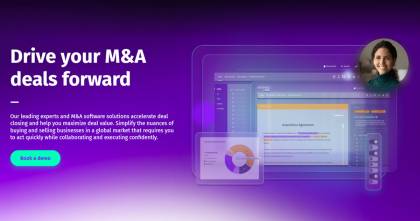Given how much attention SPACs and IPOs receive in the business news, it seems like what happens when a company goes public would be … well, public knowledge. In reality, the process of taking a company public isn’t as transparent as it might seem. For one, there are several paths to going public. Factor in the time-consuming process of negotiating, meeting mandatory requirements and promoting the public business and those who skim the finance news for stock tips lose interest. Read on to discover not only why do companies go public, but also how they go public and typical steps in the process.
Steps for Going Public
While companies can choose different ways to go public, including the SPAC and IPO — more on those shortly — the overall process shares similarities. Here are the seven steps involved in going public.
- Make a business plan: It all starts with the business plan — the document that outlines the company’s mission, goals, processes or methods and time frame. It’s your what, when and why, in short.
- Officially found the business: If your company already exists, congratulations. You can skip this step. Otherwise, if you’re starting a business you plan to take public, you'll need to officially found and incorporate the business.
- Maintain business records: When you take a company public, you’ll need to comply with regulations and maintain comprehensive records, including financial records. It makes sense to adopt these documentation practices now and maintain proper records moving forward.
- Raise capital: Before you officially go public, you'll need to demonstrate that the business is worth investing in — basically, build it up and show it off. This usually involves capital so unless you’re self-financing, you'll need to raise funds.
- Register with the SEC: This is where regulatory compliance comes in. You'll need to file either Form 10 or S-1 with the SEC to proceed with selling shares.
- File due diligence materials: Now we come back to transparency. Here, you'll file all the necessary materials for investor to do their due diligence before buying shares.
- Market and promote the public business: In order to successfully take the company public, you'll need to mount an investor relations campaign. Here, you'll promote the public business to drum up interest in shares and assure the success of the launch.
Ways to Go Public as a Company
IPO and SPAC may be the most familiar ways to go public these days, but they’re not the only ones. Routes include:
- IPO: In an IPO, a company retains an investment bank to underwrite shares, which are then offered to the public. This is a big fundraiser for companies who gain capital. There are regulatory steps associated with the IPO, including the required Form S-1 IPO filing.
- Direct Public Offering (DPO): The DPO is similar to an IPO, but with less overhead cost and regulations. Here, the company can sell shares one-on-one to the public without the intermediary.
- SPAC/de-SPAC: The SPACs & de-SPAC process mimics the IPO route but with a shell company. Here, a private company will identify a SPAC in need of a target company, merge and then decouple (or de-SPAC) after.
- Alternative Public Offering (APO): Like the SPAC, the APO uses a shell company to take the business public. Here, the company reverse merges with a PIPE or Private Investment of Public Equity. The result of this deal is a public company that has no assets (aside from PIPE funds) and no liabilities without the public fanfare of the IPO route.
Pros & Cons of Going Public
Going public is neither inherently good or bad; it all ties back to the company’s goals and season of business. Here are some pros to consider:
- Easier access to capital: Ultimately, it’s easier for publicly traded companies to raise funds.
- Valuation: Generally, public companies have a higher business valuation than private ones, and there are benefits to having a higher value. Sometimes, there’s also a higher valuation in the public eye, which can translate to more revenue.
- It pays more: Much of the time, employees are rewarded with bonuses and stock options when a company goes public.
On the downside, public companies experience more hoops and hurdles. Public companies must adhere to more requirements, file more reports and assume more liability than their private counterparts. Taken together, this means more time spend dotting i’s and crossing t’s. Public companies also are beholden to shareholders and must make decisions with them in mind rather than filtering decision-making according to founders’ wishes.
Why Go Public?
Most broadly, companies go public when the benefits of doing so outweigh the downsides.
If it is in the best interest of the business, then the company will decide to go public. Next, they will review the different paths for how to take a company public and determine which avenue makes sense for the business given the market environment. For instance, if there have been several weak or troubled IPOs of late, a company might prefer the SPAC & de-SPAC or DPO approach. Then comes the lengthy phase of satisfying the requirements for a company to go public.
Whether a business chooses a DPO, APO, SPAC & de-SPAC or IPO, it must give thought ahead of time to maintaining organization through every phase of the deal. Many companies find it essential to identify a vendor that can provide IPO solutions, from encrypted electronic SEC filing to virtual data rooms and more.
As a vendor for IPO or SPAC & de-SPAC services, DFIN is on hand to make the process efficient, streamlined and organized while constantly monitoring the changing regulatory landscape to ensure that the tools offered conform to the latest SEC mandates on the scheduled timetable. Companies trust DFIN to not only provide the systems that support deal making, but also stay one step ahead of changing regulations, needed security protections and collaborative features. With support from DFIN’s growth-oriented solutions, they can focus on the essential aspects of operations, including the success of a transition to a public company.

